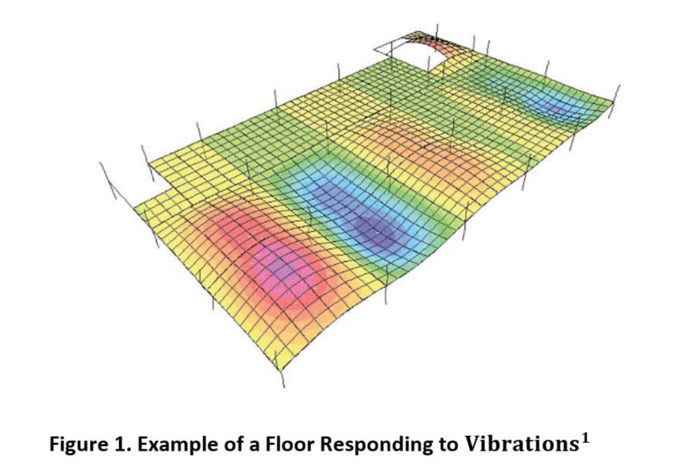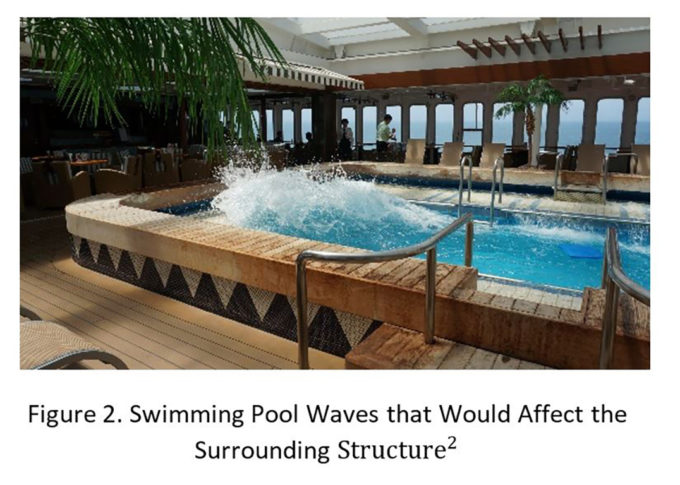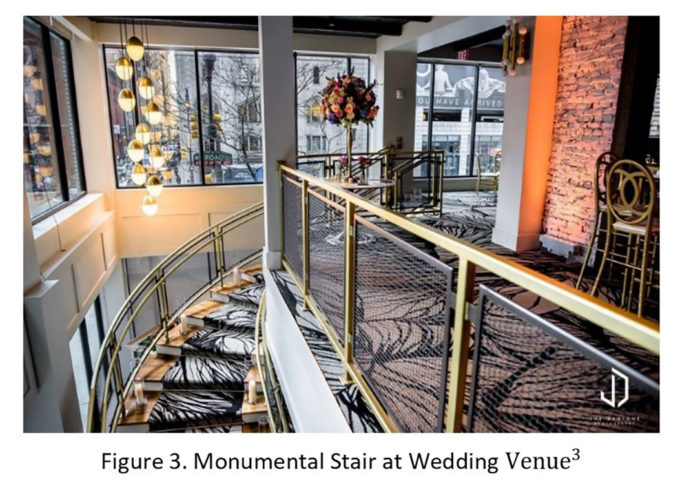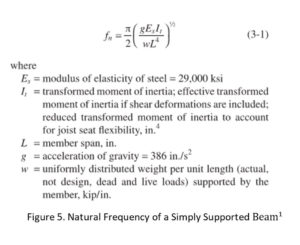The Vibration of Steel Structures Due to Human Activity
It is often the case that a steel-framed structural system is chosen for a client that is building a commercial or open to the public building. A steel-framed building can be an excellent choice for a structural system; however, it must be noted that every structural system requires more attention to different aspects of its design. Human-induced vibrations can be a critical design consideration for steel buildings because of their lightweight nature. Not all types of structures require vibration analysis. Different types of uses for a building will induce different amplitudes of vibrations and different types of occupants may be more sensitive to vibrations than others. Our structural engineering team has experience with analyzing and designing steel structures for vibrations and can come up with a cost-effective solution for any type of structure.

Not all areas of a building require vibration to be analyzed. Vibration analysis and design are critical if the occupant of space is sensitive to movement or if the occupant will be creating an excessive amount of vibration. Areas with sensitive equipment, for example, are typically affected by the structure of the building that they occupy. Facilities such as laboratories, hospitals, and workshops have sensitive equipment that cannot be subjected to large floor vibrations when operating. Additionally, spaces that receive impact loading that is adjacent to a quiet space also require vibration analysis. An example of this would a gym with weights, treadmills, etc. located on the second story of a building with office spaces beneath or adjacent to it. The office would constantly hear or feel weights dropping on the floor and runners running on the treadmills unless an engineer designs the floor to dampen types of vibrations induced on the structure by these forces. Swimming pools that are within an elevated floor can also create unintended disturbances in a building. Swimmers creating waves (Figure 2) can induce vibrations into the supporting slab and framing, ultimately transferring vibrations to the columns and other parts of the building.

Lastly, slender structures are especially sensitive to human activity. Slender structures are very long and narrow elements and as a result, impact forces from human activity are often very critical to their design. Some examples of slender structures would be pedestrian bridges and monumental stairs (Figure 3).

Acceleration is the primary parameter that is measured to determine human comfort levels when vibrations occur. The acceleration induced by a person walking can be seen below in Figure 4.

The acceleration for walking is a function of the person’s body weight and the fundamental frequency of the floor. Acceleration can be the result of many other activities such as running, rhythmic activities and staircase descents. There are a lot of activities that create vibrations, but not all occupants of a building will have the same sensitivity to them. Bleachers in a stadium have a lot of pedestrian movement and will create a large number of vibrations at a relatively high amplitude. However, a spectator sitting down doesn’t notice that the bleachers are vibrating excessively because there is so much activity happening that the movements are subliminally expected by the spectator. On the other hand, workers in an office are more sensitive to vibrations. If someone were to run past a desk and their coworker felt the floor shaking, they might be rather alarmed that the floor is moving so much. They would feel the floor vibrating and notice their computer monitor was shaking. It is the role of the structural engineer to determine what kinds of vibrations are tolerable for the use of a structure and ensure that human-induced vibrations are controlled when they need to be.
Once the acceptable acceleration and the induced forces on the structure that create the vibrations are known, there various ways we can control them. The acceleration equation shown previously was a function of the fundamental natural frequency of the structure. The natural frequency (see Figure 5) is a function of the elastic modulus of the materials being used (E), their moment of inertia (I), the weight of the structure (w), its span (L), and its boundary conditions.

Our engineers simulate multiple combinations of these variables to come up with a cost-effective solution to control vibrations in a new structure.
If a steel-framed structural system is chosen for a building, the structure may require special attention to floor vibrations. The intended use of the building space will determine how much this needs to be taken into consideration. Certain types of building occupants will be more sensitive to vibrations than others, and different types of activities will induce different types of vibrations. Our structural team at EVstudio has experience with designing structures to limit vibrations caused by human activity and can come up with a cost-effective solution for your building.
Image References
- Murray, T. M., Allen, D. E., Ungar, E. E., & Davis, D. B. (2016). Vibrations of Steel-Framed Structural Systems Due to Human Activity(2nd ed., Vol. 11). American Institute of Steel Construction.
- (n.d.). Retrieved from https://en.wikipedia.org/wiki/Slosh_dynamics
- The Lucy by Cescaphe. (n.d.). Retrieved October 3, 2019, from https://www.joedantone.com/info/for-couples/philadelphia-venues/lucy-cescaphe.







